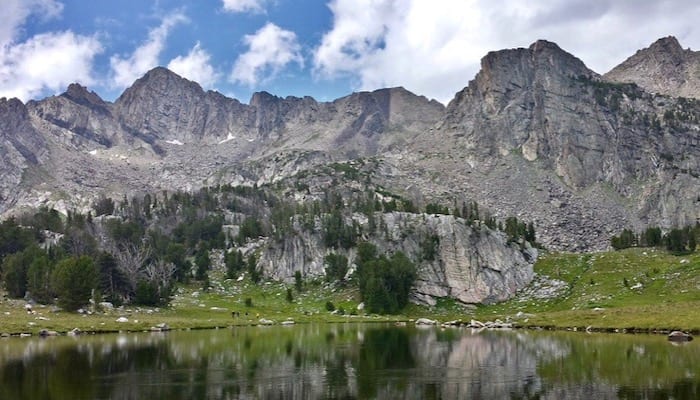Wilderness wound pitfalls
Wounds happen out there. Even with maximum preventive measures, they’re inevitable, so we should definitely know how to manage them appropriately.
This handy little report talks about a Grand Canyon boatman who injured himself at the beginning of a trip down the Colorado. It goes downhill from there, but it is a useful case to point out the things they didn’t do right, and did do wrong. The narrative is also mostly written by the river guide himself, and the style is quite humorous.
Serendipitously, or so he thought, there were two doctors on the trip, one of which whipped out his suture kit and fixed the rather large bleeding wound on his shin. I don’t have a problem with closing the wound, as it was large and likely to cause problems if left open.
What did they do wrong? First, they didn’t irrigate the wound. It goes without saying that the raft, the pack, and the Colorado River were not sterile, and thus the wound wasn’t clean either. They also shaved his leg with a razor, because apparently JCAHO was going to make a trip to the park that day. Must have left the batteries out of the electric clippers.
They correctly covered the wound with Tegaderm and Coban for protection on the first day, with subsequent dressing changes. 4 days later, the wound developed cellulitis, so he was started on Bactrim (TMP/SMX). It wouldn’t be my first choice for cellulitis, but it isn’t the worst drug to use as it covers Aeromonas. Levaquin (levofloxacin) would be great, or just adding Keflex (cephalexin) to the bactrim for better gram positive coverage coverage.
Two days later the cellulitis is progressing even with antibiotics, and now there is a pitting edema below the wound. Too late to evacuate that day, they elect to open the wound that evening. Anesthesia provided by gin and tonic. They irrigate using Betadine and pack it with Betadine-soaked gauze. The tissue-toxic solution could certainly reduce wound healing, and I can’t recommend using it. Using a squirt gun for higher pressure irrigation is a neat trick though.
Azithromycin is added to the antibiotic regimen, likely because it’s all they had. The next morning he is flown out. The good news is that after a washout in the OR and two days of wound vac therapy, they get the skin closed and it heals nicely.
Recap of important points for austere wound therapy
- Irrigate with clean water, but nothing toxic. You want to clean and promote healing, not kill tissue.
- Consider prophylactic antibiotics for dirty wounds that can’t be cleaned, especially penetrating injuries in water.
- Use occlusive dressings. They promote healing and decrease infection rates.
- Wounds less than 1 inch do not need closure, as cosmesis and infection rates are similar open or closed. Close if in an area prone to reopening certainly. Sutures, adhesive strips, and skin glue are all similar in efficacy if used appropriately.
Spano SJ, Dimock B. They had me in stitches: a Grand Canyon river guide’s case report and a review of wilderness wound management literature. Wilderness Environ Med. 2014 Jun;25(2):182-9 [PMID 24418453]
Further Reading
- Hensley J. Irrigating wounds in the wilderness. EBM Gone Wild
- Hensley J. Ants as sutures. EBM Gone Wild
- Hensley J. Wound closure on a budget. EBM Gone Wild
- Hensley J. Honey, I shrunk the wound. EBM Gone Wild

EBM Gone Wild
Wilderness Medicine
Emergency physician with interests in wilderness and prehospital medicine. Medical Director of the Texas State Aquarium, Padre Island National Seashore, Robstown EMS, and Code 3 ER | EBM gone Wild | @EBMGoneWild |

